The University Medical Center at Princeton in Monroe, New Jersey, commissioned giclée prints on canvas from Silvère Boureau to display throughout the entire center: Reception, Pre-op, Recovery, Offices, the Exam Room and a hallway.
- Reception / waiting room area
- Reception / waiting room area
- Preop
- Preop
- Recovery
- Recovery room
- Corridor
- Corridor
- Exam room
- Office
Landscapes find a place in 21st Century Medicine!
Many people fear hospitals. They imagine the treatment center as a hostile, sterile environment where they are powerless. This is a perception that most hospitals and treatment centers haven’t done much to dispel with their white-tiled, often windowless atmosphere. Until now.
According to the research of Roger Ulrich, professor of Architecture and fellow to the center for Health Systems and Design at Texas A & M University, representational art, especially that which depicts landscape and the natural world, has beneficial effects on adult patients in hospitals who are under stress and strain. He found there was an unambiguous preference for the tension-free representations of nature rather than emotionally complex canvas of abstract or expressionistic art.
Ulrich’s evidence showed that even as little as a 3 to 5 minute exposure to a painting could reduce negative, stressful emotions and increase positive ones. This stress reduction manifested itself in many ways: by lowering blood pressure and heart rate, and by a significant decrease in the reported intensity, quality of and anxiety about pain, especially in burn victims (Ulrich, Quan, Zimring, Joseph & Choudhary, 2004).
A Swedish study reported that heart-surgery patients in ICUs “who were assigned a picture with a landscape scene…reported less anxiety/stress and needed fewer strong doses of pain drug” than the control group that were not exposed to any pictures (Diette, Lechtzin, Haponik, Devrotes, & Rubin, 2003).
Based on this new research, The University Medical Center at Princeton in Monroe, New Jersey, commissioned 13 giclée prints on canvas from Silvère Boureau to display throughout the entire center: Reception, Pre-op, Recovery, Offices, the Exam Room and even in the hallway.
The effect of Silvère’s paintings is evident even in the photos below. At first the paintings appear to be slightly out of place, but as you look more, they take over the room in an oddly delightful way. Their absolute tranquility and dedication to exact representation are powerful, and draw the eye away from potentially anxiety-inducing objects, such as operating tables, scanners, computer screens, tool trays, and harsh neon lighting.
In an environment that seems so far removed from the natural world, the University Medical Center at Princeton in Monroe has found a way to bring it back in, reminding us of the simple beauty of the wildlife that gives us so many of our remedies.
By Ella Boureau.

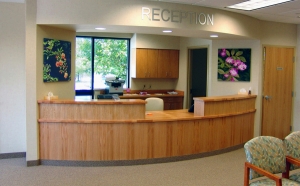
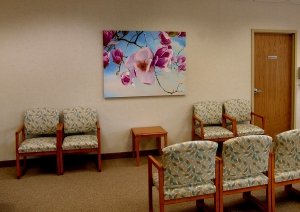
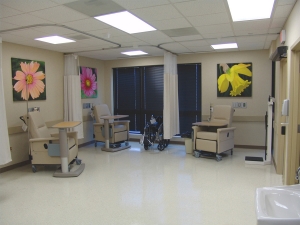
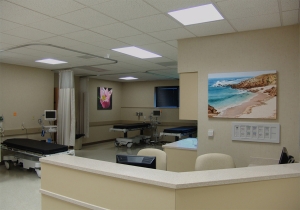
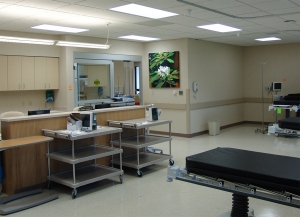
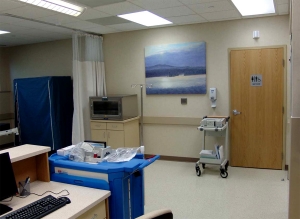
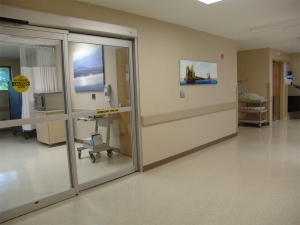
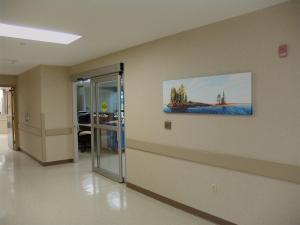
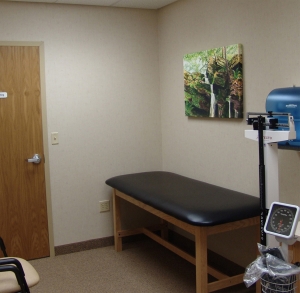
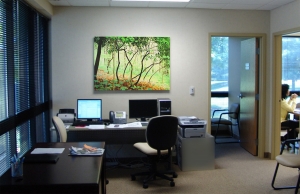
Recent Comments